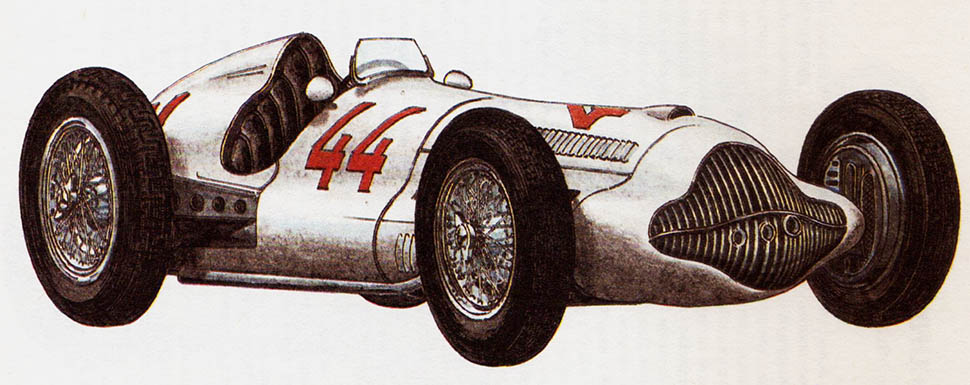MERCEDES-BENZ W154 – year 1938
Daimler Benz AG, Stuttgart, Germany.
According to the so-called. three-liter formula valid from 1938 In the year, a new Mercedes model was prepared, marked with the symbol W 154, which further strengthened the dominant position of this car brand on the Grand Prix tracks. The new model was a modified version of the Mercedes W 125. A tubular oval frame has been preserved, to which a V-shaped twelve-cylinder engine is attached. Each row of steel cylinders with non-replaceable heads was surrounded by a water jacket. Two Roots compressors with working pressure are placed in front of the cylinder blocks 220 kPa. The four camshafts in the cylinder heads controlled a total of 48 valves. The crankshaft, consisting of several parts, was mounted in rolling bearings. The complex lubrication system of the engine consisted of nine suction and nine discharge pumps. The engine cylinders were in diameter 67 mm and piston stroke 70 mm, that is, the total capacity was 2962 cm3. The car was reaching maximum power 312,8 kW (425 KM) by 7800 RPM, and there was a possibility of obtaining 9000 RPM, but only for a short time. The engine was tilted slightly back and to the side, by which the drive shaft, connecting a five-speed lock-up gearbox to a differential, it was on the left side of the driver. The chassis concept of the W model has been retained 125, with independent front wheel suspension and de Dion rear axle. Large fuel supply, necessary due to the enormous wear in the compartment 90-100 l/100km, it was distributed in two tanks in order to evenly load the vehicle. These tanks had a total capacity 400 liters. One of them was in front of the driver, and others after him. However, the change in the weight distribution influenced the driving properties of the vehicle, so hydraulic shock absorbers were used, adjustable while driving. Model W 154 had a total mass 1200 kg and reached the top speed 290 km/h.

Daimler Benz AG, Stuttgart, Germany.
Mercedes W. 154 on Grand Prix tracks he had an advantage over competing cars. Only Auto Union and Delahaye beat him. Mercedes – Rudolph Caracciola, Herman Lang, Manfred von Brauchitsch and Richard Seaman won four Grand Prix races: Lang won the Tripoli Grand Prix (205,1 km/h), Seaman - at the German Grand Prix (129,8 km/h), Caracciola - Swiss Grand Prix (143,6 km/h) and von Brauchitsch - French Grand Prix (162,8 km/h). In three races, Mercedes took the first three places, and Caracciola became three times European champion.